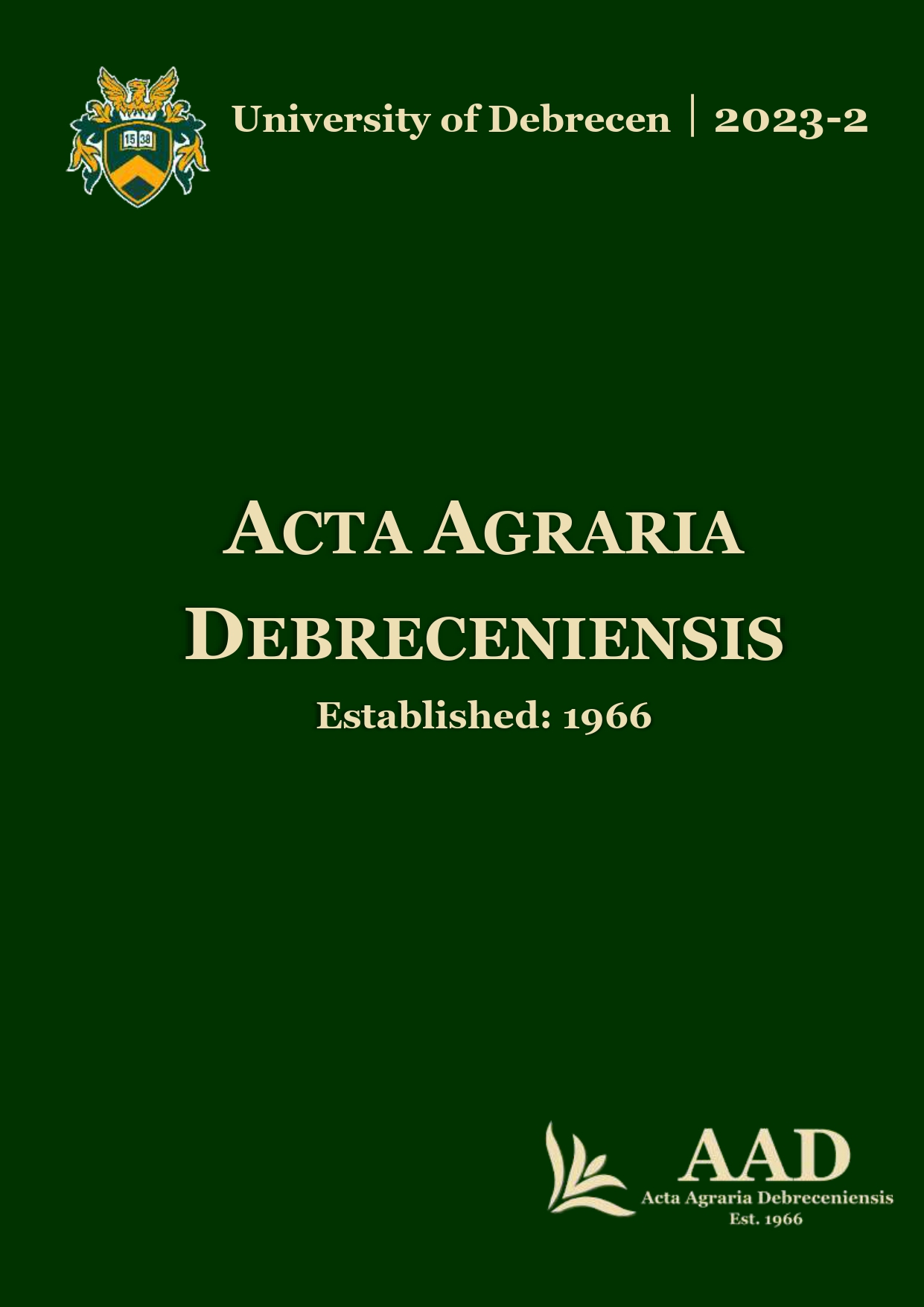Impact of tillage systems on maize emergence
Authors
View
Keywords
License
Copyright (c) 2023 by the Author(s)

This work is licensed under a Creative Commons Attribution 4.0 International License.
How To Cite
Accepted 2023-09-18
Published 2023-12-01
Abstract
In Europe, there has been a significant change in the way tillage is approached in recent years. This change is due to a growing awareness among farmers, politicians and society as a whole that soil is not a renewable resource in itself. From an agricultural point of view, the greatest impact on soil condition can be achieved through the use of the applied tillage systems. My research takes this approach as a basis when examining the different tillage systems and their impact on the environment. In this context, conventional and a variety of no-tillage systems are examined in this paper. As a next step, it is examined how the environmental conditions created by the different tillage systems influence the emergence of maize hybrids. The analyses are carried out in a multi-factorial, long-term tillage field experiment. The same batch of the same hybrid seed was sown in several crop years, and the effects of environmental conditions on the emergence process were examined. Environmental effects and emergence-related uptake were measured in the examined plots. Measurements of environmental effects included air temperature, precipitation, soil temperature measured at seeding depth, as well as % cover of stem residue on the surface in the treated plots. The first emergence time measurements of the sown crop in the plots of each treatment were compared and relationships between these factors were investigated.
References
- Al-Darby, A.–Lowery, B. (1987): Seed zone soil temperature and early corn growth with three conservation tillage systems. Soil Science Society of America Journal, 51(3): 768–774. https://doi.org/10.2136/sssaj1987.03615995005100030035x
- Alessi, J.–Power, J.F. (1979): Corn Emergence in Relation to Soil Temperature and Seeding Depth. Agronomy Journal, Volume 63, Issue 5: 717–719.
- Aziz, I.–Mahmood, T.–Islam, K.R. (2013): Effect of long term no-till and conventional tillage practices on soil quality. Soil and Tillage Research, 131: 28–35. https://doi.org/10.1016/j.still.2013.03.002
- Dı́az-Zorita, M.–Perfect, E.–Groveb, J.H. (2002): Disruptive methods for assessing soil aggregation. A review. Soil and Tillage Research 64 (1): 3–22. https://doi.org/10.1016/S0167-1987(01)00254-9
- Duvick, D.N. (1997): What is yield? Procedings of a symposium for developing drought and low N-tolerant maize, 25–29.
- Fasoula, V.A.–Fasoula, D.A. (2000): Honeycomb breeding: Principles and applications. Plant Breeding Reviews, 18: 177–250. DOI:10.1002/9780470650158.ch4
- German, A.–Bollero, D.G.–Bullock, S.E. (1996): Soil Temperature and Planting Date Effects on Corn Yield, Leaf Area, and Plant Development. Agronomy Journal, 3: 385–390. https://doi.org/10.2134/agronj1996.00021962008800030005x
- Hayhoe, H.N.–Dwyer, L.M.–Balchin, D.–Culleyn, J.L.B. (1993): Tillage effects on corn emergence rates. Soil and Tillage Research, Volume 26, Issue 1: 45–53. https://www.mdpi.com/2077-0472/13/3/600
- Heidi, K.–Reed, H.D.–Karsten, W.S.–Curran, J.F.–Tooker, S.W.D. (2019): Planting Green Effects on Corn and Soybean Production. Agronomy Journal, Volume111, Issue 5: 2314–2325.
- Hill, P. (2000): Crop response to tillage systems. In Conservation Tillage Systems and Management, Ames, Iowa: Iowa State Univ.
- Karayel, D. (2008): Evaluation of three depth-control components on seed placement accuracy and emergence for a precision planter. Applied Engineering in Agriculture, 24(3): 271–276. DOI:10.13031/2013.24494
- Nagy, J. (2021): Kukorica. Budapest, 36–42.
- Narwal, S.S.–Poonia, S.–Singh, G.–Malik, D.S. (1986): Influence of sowing dates on the growing degree days and phenology of winter maize (Zea mays L.). Agricultural and Forest Meteorology, 38: 47–57. DOI:10.1016/0168-1923(86)90049-3
- Ranbir, S.–Minakshi, S.–Ajay, S. (2014): Effect of Tillage and Crop Residue Management on Soil Physical Properties. Journal of Soil Salinity and Water Quality, 10(2): 200–206. https://doi.org/10.3390/su142315641
- Romaneckas, K.–Avizienyte, D.–Adamaviciene, A.–Buragiene, S.–Kriauciuniene, Z.–Sarauskis, E. (2020): The impact of five long-term contrasting tillage systems on maize productivity parameters. Agricultural and Food Science, 29(1): 6–17. DOI:10.23986/afsci.83737
- Tolleraar, M. (1992): Is low plant density a stress in maize? Maydica. 37: 305–311, https://doi.org/10.3390/agronomy10020281
- Tokatlidis, I.S.–Koutroubas, S.D. (2004): A review of maize hybrids’ dependence on high plant populations and its implications for crop yield stability. Field Crops Research, 88. 2–3: 103–114. https://doi.org/10.1016/j.fcr.2003.11.013
- 11.013

 https://doi.org/10.34101/actaagrar/2/13223
https://doi.org/10.34101/actaagrar/2/13223